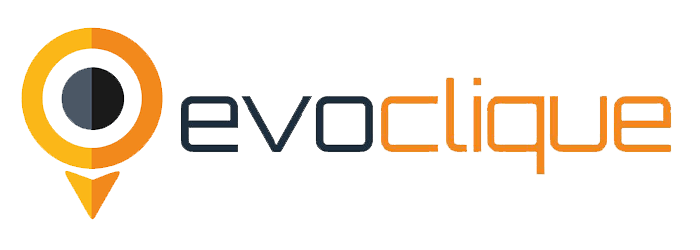Despite having what may be considered decent salaries, many individuals and families find themselves living paycheck to paycheck. This scenario is increasingly common, as various financial pressures strain budgets and force a reevaluation of personal spending habits. A significant contributor to this phenomenon is the rising cost of essential services and goods, which includes housing, healthcare, and daily expenses. For instance, the U.S. Bureau of Labor Statistics reports that rental prices have surged significantly over the past decade, often outpacing wage growth in many regions. This disparity makes it challenging for individuals to save or invest, perpetuating a cycle of reliance on immediate earnings.
Healthcare costs pose another profound challenge. With medical expenses continually rising, many individuals find that a substantial portion of their income is diverted towards health insurance premiums, copays, and out-of-pocket costs. As medical emergencies can arise unexpectedly, many people forgo savings in favor of meeting these expenses, further entrenching their financial instability. Nationwide surveys indicate that approximately 60% of Americans do not have enough savings to cover a $1,000 emergency, underscoring the precariousness of living paycheck to paycheck.
Moreover, the emotional toll of such financial strain cannot be underestimated. The stress associated with constant financial insecurity can lead to feelings of anxiety and helplessness. Individuals may feel trapped in a cycle from which escape seems impossible, which can lead to detrimental spending patterns that exacerbate the situation. This psychological impact can affect not only personal well-being but also interpersonal relationships and overall quality of life. Thus, the reality of living paycheck to paycheck extends far beyond mere budgeting; it is a multifaceted issue that many face in today’s economic landscape.
Understanding Lifestyle Creep
Lifestyle creep refers to the gradual increase in spending that accompanies a rise in income. This phenomenon often occurs without individuals realizing it, as expenses increase to match or exceed newfound earnings. While a salary increase or promotion seems like a cause for celebration, it often leads to a series of subtle and incremental changes in lifestyle. For instance, an individual may start dining out more frequently, upgrading their living situation, or purchasing luxury items that were previously deemed unaffordable. These choices often stem from a sense of entitlement or the belief that one deserves these rewards after hard work.
One common justification people use to rationalize this behavior is the notion of maintaining a certain social status. As friends and colleagues elevate their expenditures, individuals may feel pressured to keep up, resulting in a cycle of overspending. For example, consider a young professional who receives a promotion. In their eagerness to celebrate, they might treat themselves to expensive vacations or high-end gadgets, losing sight of the fact that their financial trajectory may now be at risk. Over time, these cumulative decisions can significantly erode savings and financial stability.
Additionally, lifestyle creep can manifest through seemingly innocent purchases. Whether it’s a new subscription service or an upgraded smartphone, these additions may appear manageable at first. However, when aggregated, they can lead to a substantial outflow of income. Many individuals may not notice this until a significant portion of their earnings are allocated to discretionary spending rather than savings or investments. As a result, even with a higher income, the ability to build wealth or save for future goals diminishes.
By understanding lifestyle creep and its effects, individuals can consciously recognize their spending patterns and align them with their long-term financial objectives, effectively countering this often-overlooked issue.
Identifying Bad Spending Patterns
Understanding your spending patterns is a crucial step in breaking free from the cycle of living paycheck to paycheck. Many individuals unknowingly engage in behaviors that lead to unnecessary financial strain. A prevalent issue is impulsive buying, where consumers make unplanned purchases driven by emotions or immediate gratification. This type of spending can deplete funds rapidly and contribute significantly to financial stress.
Another common pitfall is emotional spending, which often surfaces during periods of stress, sadness, or even boredom. People may turn to shopping as a temporary escape or a means of self-soothing, acquiring items that they do not actually need. These expenditures can quickly accumulate, leading to feelings of guilt and regret after the fact, further exacerbating financial woes.
The influence of advertising cannot be overlooked either. Companies continually bombard consumers with messages designed to create a sense of urgency and desirability around their products. The result can lead to a false perception of necessity and the impulse to purchase items that were not originally deemed essential. Recognizing these influences can be instrumental in controlling spending behaviors.
To effectively track and manage spending patterns, individuals can employ various strategies. Maintaining a detailed budget that outlines income and expenses on a monthly basis offers visibility into financial health. Tracking spending through financial apps or simple spreadsheets can also help identify spending triggers and patterns over time. By documenting all transactions, individuals can pinpoint areas where adjustments are necessary, setting realistic goals for improvement.
Ultimately, identifying bad spending patterns is essential for fostering better financial habits. Once these behaviors are recognized, it becomes possible to develop a structured plan to curb unnecessary expenses, leading to improved financial well-being.
Breaking the Cycle: Practical Steps Towards Financial Freedom
To successfully break free from the paycheck-to-paycheck cycle, one must adopt practical strategies that promote financial stability and security. The first step in attaining financial freedom is creating a detailed budget. A budget acts as a compass for managing income and expenses, allowing individuals to identify unnecessary expenditures. Utilizing budgeting tools or apps can streamline this process and facilitate a clearer overview of one’s financial landscape. The aim should be to allocate money to essential needs first, followed by savings, and only then discretionary spending.
Setting financial goals is equally crucial. Whether it is saving for a vacation, a new home, or retirement, concrete goals provide a motivational framework. These goals should be specific, measurable, achievable, relevant, and time-bound (SMART). This clarity not only aids in prioritizing spending but also fosters accountability in financial choices. When paired with regular financial reviews, individuals can adapt their strategies as needed to maintain alignment with their objectives.
Reducing expenses without compromising quality of life can significantly impact financial health. Simple adjustments, such as cooking at home, canceling unused subscriptions, or utilizing community resources can lead to significant savings. Emphasizing the importance of distinguishing between needs and wants is vital in curbing excessive expenditure. Furthermore, building an emergency fund is a crucial aspect of financial planning. This fund acts as a safety net, providing peace of mind and helping to prevent reliance on credit in times of unexpected need.
It is important to recognize the psychological benefits of achieving financial stability. The security that comes with managing finances well can lead to reduced stress and improved overall well-being. For those seeking further education and support, numerous resources are available, including online financial literacy courses and community workshops. Utilizing these resources can empower individuals on their journey to breaking the paycheck-to-paycheck cycle and achieving lasting financial freedom.




